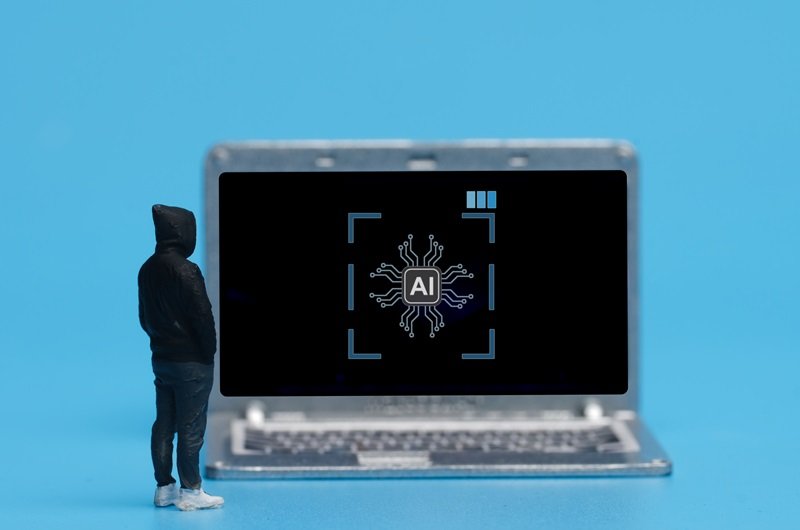
Outsmarting AI fraudsters … with AI
- By aya
Last updated on December 17th, 2024
Introduction
In recent years, artificial intelligence (AI) has rapidly transformed industries and revolutionized how businesses operate. However, this same technology has also been exploited by fraudsters to create sophisticated scams and cyber threats. As AI fraudsters continue to refine their tactics, the need for countermeasures that leverage AI itself has never been more urgent. In this article, we will explore how AI can be used to outsmart AI-driven fraudsters and protect individuals and businesses from emerging cyber threats.
1. Understanding AI Fraudsters: The Growing Threat
AI fraudsters are increasingly utilizing advanced algorithms to carry out their deceptive tactics. These fraudsters can exploit AI’s ability to create convincing fake identities, generate fraudulent content, and manipulate communication channels. One of the most alarming uses of AI by fraudsters is in phishing attacks, where they create more believable fraudulent emails and messages that can trick even the most cautious individuals. Additionally, AI-generated deepfakes—hyper-realistic fake videos and audio recordings—are used to manipulate public opinion or steal identities. As AI becomes more sophisticated, the complexity of scams is also evolving, making it harder to detect and prevent fraud. Understanding the different ways AI can be weaponized by fraudsters is essential to developing effective countermeasures.
2. The Role of AI in Fraud Prevention
While AI fraudsters are becoming more advanced, AI itself is being used to counteract these threats. AI is already being implemented in fraud detection systems that utilize machine learning algorithms to monitor and analyze transactions for unusual behavior. This includes flagging patterns that deviate from the norm, such as sudden large withdrawals or multiple failed login attempts, which could indicate fraudulent activity. AI can also assist in improving authentication methods, such as biometrics, which use facial recognition or fingerprints to verify identities securely. By incorporating AI into fraud detection systems, businesses can significantly reduce the risk of fraud and prevent financial losses.
3. AI-Driven Cybersecurity: Protecting Data and Privacy
With the increasing sophistication of cyber threats, AI-driven cybersecurity solutions have become essential for protecting sensitive data. AI systems equipped with anomaly detection algorithms can track user behavior in real-time and identify any suspicious or abnormal activity that could signal an attempted breach. For example, if a user’s login pattern changes suddenly—such as logging in from a new location—AI can automatically trigger security measures like multi-factor authentication (MFA) to verify the user’s identity. Additionally, AI can scan network traffic for known patterns of malicious activity, helping to prevent data breaches before they happen. These AI-powered systems work around the clock to ensure that any potential threats are swiftly identified and mitigated, enhancing overall cybersecurity.
4. The Power of Machine Learning in Identifying Fraudulent Pattern
Machine learning (ML) plays a crucial role in identifying fraudulent activities by analyzing large datasets and detecting subtle patterns that may go unnoticed by humans. Through training, machine learning models can learn to identify indicators of fraud, whether in financial transactions, customer interactions, or social media communications. For example, ML can identify a sudden surge in credit card transactions from a specific geographic region, which might indicate a fraud ring in operation. Similarly, it can detect unusual patterns in communication, such as emails that show signs of being generated by AI or impersonating legitimate organizations. By continuously learning and adapting, ML models improve over time, becoming more accurate in detecting fraud and preventing it in its early stages.
5. Battling Deepfakes and AI-Generated Fake Content
Deepfake technology is one of the most alarming developments in AI-driven fraud, enabling the creation of hyper-realistic but entirely fake videos and audio recordings. These tools can be used to impersonate individuals in high-profile positions, manipulate media content, or deceive the public. The rapid growth of deepfake technology presents serious risks to personal security, corporate reputations, and national security. AI-based detection tools are now being developed to combat deepfakes by analyzing inconsistencies or anomalies in digital media. For example, AI algorithms can detect subtle glitches in facial expressions, voice patterns, or lighting that indicate a video has been altered. These detection systems are crucial for identifying and stopping the spread of fake content, ensuring that AI-generated deception doesn’t compromise trust.
6. The Future of AI in Fraud Prevention: Challenges and Opportunities
While AI offers enormous potential in the fight against fraud, it also faces challenges that need to be addressed. One of the major concerns is the issue of bias in AI algorithms, where models might incorrectly flag legitimate activities as fraudulent due to skewed data. Furthermore, as AI fraudsters continue to improve their tactics, they may find ways to exploit vulnerabilities in AI-based defense systems. For instance, AI models used in fraud detection could be vulnerable to adversarial attacks, where fraudsters manipulate the input data to trick the system into making incorrect predictions. Additionally, ethical concerns arise regarding privacy and the potential misuse of AI in surveillance. Nevertheless, as the technology evolves, there are significant opportunities to improve fraud detection systems and create more secure environments. Continuous research and development will be critical to overcoming these challenges and ensuring that AI remains a powerful tool in the fight against fraud.
Conclusion
As AI continues to evolve, so too do the methods used by fraudsters to exploit it. However, by leveraging AI-driven solutions, businesses and individuals can stay one step ahead of these criminals. The battle between AI-powered fraud and AI-powered defense is only beginning, and it will take innovation, vigilance, and collaboration to outsmart the fraudsters. With the right tools and strategies, we can ensure that AI remains a force for good in the fight against fraud. With continued advancements in AI, it is possible to reduce the risks posed by AI fraudsters and safeguard the digital world for everyone.
